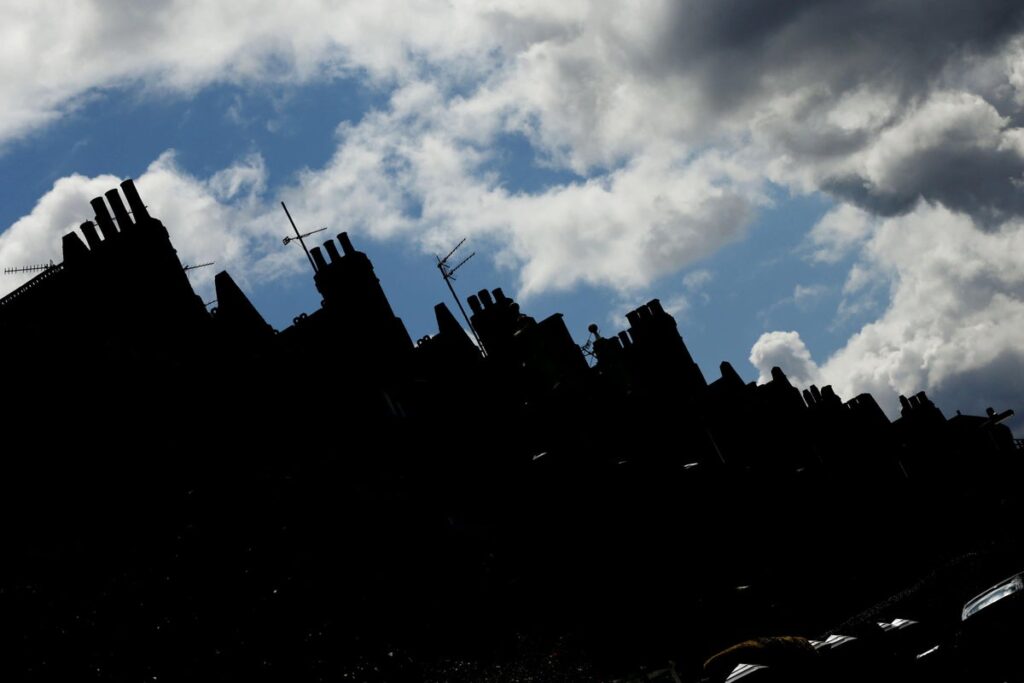The housing market became subdued towards the end of March, following an initial rush to beat the stamp duty deadline at the end of last month, according to surveyors.
The Royal Institution of Chartered Surveyors (Rics) said its feedback from professionals points to house prices flattening out in recent months.
A net balance of 2% of surveyors reported prices rising rather than falling in March, shrinking from a balance of 11% in February and 20% in January.
The picture is mirrored across most of the UK, but Scotland and Northern Ireland appear more resilient to downward price pressures, the report said.
From April 1, the “nil rate” stamp duty threshold for first-time buyers reduced from £425,000 to £300,000, and for home-movers the zero rate threshold halved from £250,000 to £125,000. Stamp duty applies in England and Northern Ireland.
Demand from new house-hunters fell deeper into negative territory in March, with a net balance of 32% of surveyors reporting a decrease in demand rather than an increase, following a balance of 16% reporting this the previous month.
The latest survey marks the weakest measure of demand since September 2023, Rics said.
A net balance of 16% of surveyors also reported sales falling back in March, although a balance of 11% expect sales to rise in the next 12 months.
In the rental market, professionals reported demand from tenants rising in March, marking the first increase recorded since October last year.
But new instructions from landlords are continuing to fall.
Against the backdrop of the demand and supply mismatch, a net balance of 31% of professionals expect rental prices to increase over the next three months.
Get a free fractional share worth up to £100.
Capital at risk.
Terms and conditions apply.
Go to website
Get a free fractional share worth up to £100.
Capital at risk.
Terms and conditions apply.
Go to website
The impact of US tariffs may stimulate further uncertainty for the UK property market, the report added.
Rics chief economist Simon Rubinsohn said: “The expiry of the stamp duty break was always going to lead to a pause in activity in the sales market.
“However, the latest results, and indeed the anecdotal remarks from respondents to the survey, suggest that the shift in sentiment has been aggravated by the slew of negative macro newsflow over the past few weeks.
“Looking forward, the impact on the market will in no small part depend on how the economy is affected by the emerging trade war and the response of the Bank of England to the shifting environment.
“For now, it is noteworthy that the longer-term Rics expectations metrics are still relatively resilient, but they have the potential to be blown off course if the tariff headwinds intensify.”
Tom Bill, head of UK residential research at Knight Frank, said: “As buyers adapt to higher rates of stamp duty from this month, they also face headlines about a global recession sparked by US tariffs.
“While that may not be conducive to positive sentiment, the good news is that markets now expect the Bank of England to cut rates three times this year rather than two to deal with a possible economic slowdown.
“Ideally, the appearance of more sub-4% mortgages would be accompanied by an end to the gyrations seen on money markets in recent days.
“The risk is that tariffs may ultimately prove to be inflationary and the spillover effects mean upwards pressure on mortgage costs in the UK. For now, the housing market feels steady although the prospect of a tax-raising autumn Budget will throw more uncertainty into the mix later this year.”
Coventry Building Society’s broker arm, Coventry for Intermediaries, announced selected fixed-rate mortgage rate cuts on Wednesday, with new deals including a two-year fixed-rate mortgage for home-buyers at 3.89%, with a £999 fee, for borrowers with a 35% deposit.
Jonathan Stinton, head of mortgage relations at Coventry Building Society, said: “Swap rates have fallen, which has created room for more movement on mortgage pricing.
“We’ve reduced rates across our residential and buy-to-let ranges, with some of the biggest cuts going to two-year fixes – reflecting growing demand for shorter-term flexibility in an uncertain market.”
Figures released by financial information website Moneyfacts on Wednesday morning showed the average two-year fixed home-owner mortgage rate on the market across all deposit sizes was 5.30%, down from 5.32% on Tuesday.
The average five-year fixed home-owner mortgage rate was 5.15%, down from 5.17% on Tuesday.
Jeremy Leaf, a north London estate agent said: “With lettings, we have found demand has been supported over the past few weeks at least by aspiring first-time buyers who were unable to profit from the stamp duty concession before it disappeared who were now looking to re-let.
“However, the continuing lack of stock and slow increase in the number of landlords wanting to sell has exacerbated the supply/demand imbalance.”











More Stories
IMF Warns Trump Tariffs Will Weaken Economy and Increase Inflation
Sustainable investing: How does it work and can my money support green issues?
Chocolate prices up nearly 50 per cent in three years as ‘Chocflation’ persists